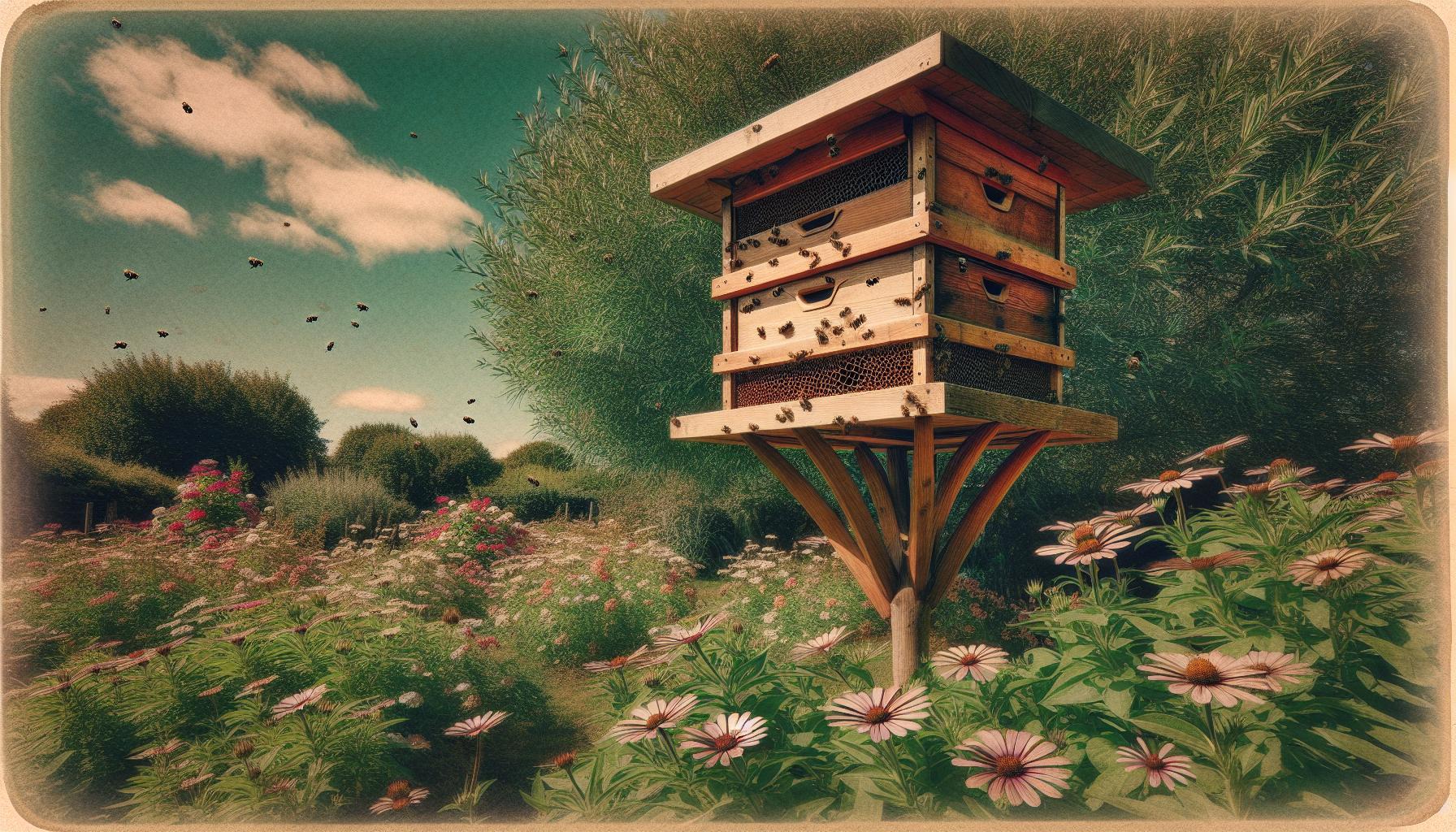For beekeepers, few experiences rival the excitement of capturing a wild swarm. Swarm traps are effective, eco-friendly tools designed to attract bees by mimicking ideal nesting conditions. Whether you're a beginner or a seasoned beekeeper, understanding how to set up and maintain these traps can help you expand your apiary while supporting local pollinator populations.
What Is a Swarm Trap?
A swarm trap is a specially designed container used to attract and capture honeybee swarms. Beekeepers deploy these traps to collect wild bees when they relocate from their parent hives. Swarm traps typically hold 20-40 liters, providing the space bees need for a new home.
These traps can be made from materials like wooden boxes, cardboard containers, or plastic. Lures such as lemongrass oil or old comb enhance their appeal by mimicking the scents bees associate with safe nesting sites. Placed strategically—usually 10-15 feet above the ground in shaded areas near flowering plants or water sources—swarm traps can be a cost-effective and sustainable way to expand hives.
Benefits of Using Swarm Traps
Swarm traps offer several advantages, benefiting both beekeepers and the environment:
- Cost-Effective: Homemade traps can cost under $50, making them significantly cheaper than purchasing packaged bees or nucs.
- Efficient Swarm Capture: Proper placement and lures like lemongrass oil can result in success rates as high as 80%.
- Promotes Biodiversity: Capturing and relocating wild bees helps maintain local pollinator populations, benefiting ecosystems and agriculture.
Types of Swarm Traps
Homemade Swarm Traps
Homemade traps are budget-friendly and customizable. They can be crafted from wooden boxes, cardboard, or buckets and modified for specific needs. Wooden traps are durable and reusable, while cardboard traps are lightweight and suitable for short-term use. Adding old comb or lemongrass oil increases their effectiveness by mimicking natural bee pheromones.
Commercial Swarm Traps
Commercial traps offer convenience and ready-made designs. They are often made from plastic, treated cardboard, or wood and may include features like entrance reducers and synthetic pheromone lures. Prices typically range from $20 to $80, making them an excellent option for those who prefer a hassle-free setup.
How to Set Up a Swarm Trap
-
Choose the Right Location:
- Place traps 10-15 feet above ground in shaded, quiet areas.
- Position them near flowering plants, water sources, or along known swarm paths.
-
Prepare the Trap with Lures:
- Add a few drops of lemongrass oil to mimic queen pheromones.
- Include pieces of old comb to create an inviting scent.
- Ensure the trap’s volume is 20-40 liters to meet a swarm’s spatial needs.
-
Monitor and Maintain the Trap:
- Check traps every 7-10 days for bee activity, damage, or pests.
- Once a swarm occupies the trap, transfer it to a hive within 2-3 days to prevent overpopulation or absconding.
- Clean and repair traps after use to ensure longevity.
Common Challenges and Solutions
-
Ant Infestations:
Apply a sticky barrier like Tanglefoot around the base of the mounting pole or tree. Seal all seams and avoid areas with high ant activity. -
Weather Damage:
Use weatherproof materials for homemade traps or purchase durable commercial options. Ensure proper drainage and place traps in wind-protected areas to avoid waterlogging or structural damage. -
Poor Timing:
Deploy traps in early spring when bees are most active in swarming. Research local swarming seasons to align with regional blooming patterns.
Frequently Asked Questions
What is a swarm trap?
A swarm trap is a container designed to attract and capture wild honeybee swarms. It mimics bees’ natural nesting preferences, including structure, scent, and location.
What materials are swarm traps made from?
They can be made from wood, treated cardboard, or plastic. Homemade traps often use recycled materials, while commercial options are pre-built for convenience.
Where should I place my swarm trap?
Place it 10-15 feet above the ground in a shaded, quiet area near flowering plants or water sources. Positioning traps along known swarm paths can improve success rates.
What lures can I use?
Lemongrass oil mimics queen pheromones, while old comb provides a familiar scent that bees associate with safety. These lures significantly increase the chances of capturing a swarm.
How much do swarm traps cost?
Homemade traps cost under $50, while commercial traps range from $20 to $80, depending on materials and features.
When should I deploy swarm traps?
Place traps in early spring, during peak swarming season. This timing coincides with blooming flowers, making it easier to attract scout bees.
How often should I check my swarm trap?
Inspect traps every 7-10 days to monitor activity, prevent pest infestations, and address weather-related issues.



